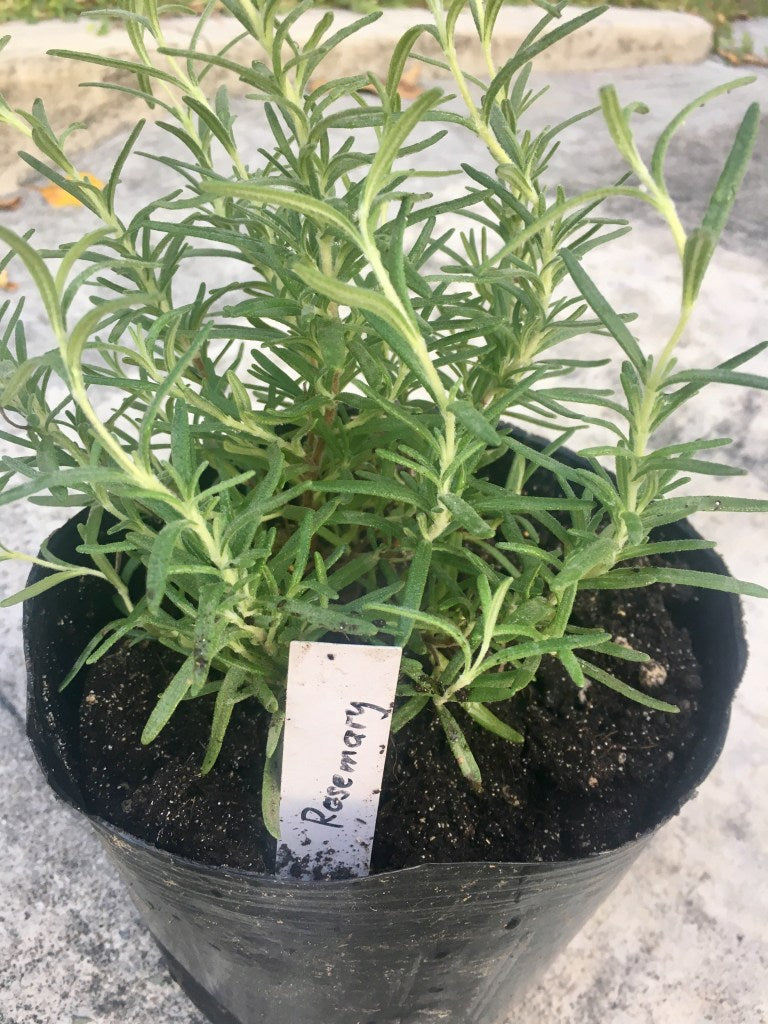
Grow Rosemary in the Tropics: Here’s how
Share
If I were to rank herbs in terms of my difficulty in growing them, I would say rosemary is at the top of my list. This herb originated in the mediterranean region where there are usually mild winters and hot summers. In other words, the herb thrives best in very dry conditions. Here in the tropical Philippines, where the climate can be humid (yet extremely hot) during summer months, while very wet during the rainy season, I found it a challenge at the start to grow rosemary successfully in the Philippines.

I must have “killed” about a dozen rosemary herbs in my garden. Finally, about a year ago, I tried growing rosemary again from a seedling that I bought at the garden shop. This time, my rosemary herbs seem to be thriving well until now and and have even produced a lot more branches and leaves since a year ago.
Find that perfect spot
Rosemary herbs are quite sensitive to sudden changes in their environment. So it’s important to find the perfect spot for your rosemary and to leave it there permanently. An ideal spot should give them some sunshine, but should be able to shield the plants from heavy rains.
Rosemary is one of those herbs that do not enjoy being soaked. Too much water causes the roots to rot. With not enough healthy roots to support it, the plant will eventually wither and die. Use a well draining pot and soil that is mixed with coco peat, rice hull and pumice (or coarse sand) for increased drainage.

During heavy rains, you may optionally wrap the pot with a plastic bag (or garbage bag) as shown in the photo. Make sure the “raincoat” is open at the bottom to allow air and water to flow through. When the rainy season is over, you may unwrap the pot.
Watering tips
Watering the rosemary is quite tricky. To know if watering is already needed, feel the soil up to about an inch deep. If it feels dry, then the plant needs water; otherwise, wait another day. This means that watering can be done once or twice a week only. However, do not wait for the soil to dry out as lack of water may also kill the rosemary. Watering should be done in the morning, making sure that the soil doesn’t get too soaked or soggy.
Propagating Rosemary

This herb rarely produces seeds, so the best way to propagate rosemary is through cuttings. Cut a few stems (4 – 5 inches long) and remove the lower leaves. Choose the soft portion of the stem and not the woody part.
Soak the cuttings in about an inch of water and change the water every 3 days. In less than 2 weeks, the new roots will start to appear. Wait another 2 weeks or until the stems have fully rooted before transplanting the cuttings into a well-draining pot. Water the plant once and then thereafter only when the soil feels dry.
The rosemary plant grows slowly at the start. Wait until the newly – rooted cuttings develop new stems or branches before transplanting them permanently into a bigger pot. When transplanting, be careful that the roots are not disturbed too much.
Plant Care and Maintenance
Choose a medium sized container (or bigger), with at least 6 -8 inches in diameter and depth. The bigger the container, the taller it grows. In other countries, a mature plant can reach more than 3 feet. Here in the Philippines, I have seen these plants grow up to about 1- 2 feet in height when grown in containers.
Make sure to provide enough holes at the bottom of the pot to allow excess water to drain properly, and use a well-draining potting soil. Ordinary garden soil has a tendency to harden or compress, which could prevent proper drainage of water.
Add compost material to the soil sparingly every 3 months. Rosemary is a hardy plant and it can survive even with minimal nutrients in the soil. They are rarely prone to pests and can even repel certain insects.
These herbs also prefer alkaline soil. Avoid commercial fertilizers because they tend to amend the soil’s pH level, making it more acidic. If you think the soil is too acidic, try sprinkling it with a little humic acid. Humic acid is a soil conditioner that balances the soil’s acidity.
While rosemary is my favorite culinary herb, I would not suggest it for starters in gardening. It takes a little patience to successfully grow this herb in the tropics. With some practice however, growing rosemary can definitely be a rewarding experience.


7 comments
I will love to have rosemary plants in my garden in Punta Cana Dominican Republic, however after reading this article, by the way , excellent , I don’t think the plant will survive.
thank you
I will love to have rosemary plants in my garden in Punta Cana Dominican Republic, however after reading this article, by the way , excellent , I don’t think the plant will survive.
thank you
Hello
I live in the Caribbean where we get very little rain. Mostly hot and humid. Any tips for me?
My second attempt to grow rosemary. The first time was a disaster because I have no idea on how to take care of it. Your input is very well explained. I hope I’ll get it right this time.
Thanks for your tips. My brother just sent me some rosemary to grow in Jakarta. It’s dry season now so I hope the plants will survive.